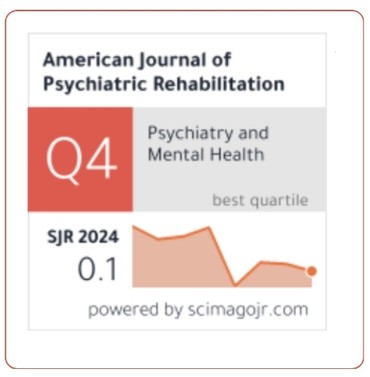Phenotypic detection of inducible clindamycin resistance by D-test in Staphylococci from various clinical samples
DOI:
https://doi.org/10.69980/ajpr.v28i5.367Keywords:
MLSB, D-test, ermA, msrAAbstract
Background: Staphylococcus aureus is a major opportunistic human pathogen causing many clinical infections. Three MLSB phenotypes are known in S. aureus, a constitutive resistant phenotype (cMLSB), a clindamycin-susceptible phenotype in vitro with inducible resistance in vivo (iMLSB), and a clindamycin-susceptible and macrolide-steptogramin B-resistant phenotype (MSB). Method: This prospective-observational study was carried out in Department of Microbiology, NIMS medical college, Jaipur, Rajasthan from July 2023 to Sept 2024. A total of 50 Staphylococci were isolated from different types of samples. All the Staphylococcus aureus isolates that were resistant to erythromycin were tested for inducible Clindamycin resistance by double disk approximation test (D-test) as per CLSI guidelines. Result: A total of 50 Staphylococci isolates, MSSA were 18 (36%) followed by CONS 12 (24%), MR-CONS 12 (24%) and MRSA 8 (16%). Out of total 50 isolates, 17 (34%) showed inducible resistant by D-test. In which MSSA were 3 (18%), CONS 5 (29%), MR-CONS 4 (24%) and MRSA 5 (29%). Inducible resistance was observed among various clinical samples like, Blood samples 10 (60%) followed by Pus 5 (30%), Wound Swab 1(5%), and High Vaginal Swab 1(5%). Discussion: In this study we found 34% inducible clindamycin resistance by D-test. Similar, findings observed in various studies also. Conclusion: Highest percentage of inducible resistance found in isolates from Blood sample. Clinical microbiology laboratories should report inducible Clindamycin resistance in Staphylococcus aureus and D-test can be used as a simple, auxiliary and reliable method to Delineate inducible and constitutive Clindamycin resistance in routine clinical laboratories.
References
1. Adhikari RP, Shrestha S, Barakoti A, Amatya R. Inducible clindamycin and methicillin resistant Staphylococcus aureus in a tertiary care hospital, Kathmandu, Nepal. BMC Infect Dis. 2017;17(1):483. https://doi.org/10. 1186/s12879-017-2584-5.
2. Ajantha GS, Kulkarni RD, Shetty J, Shubhada C, Jain P. Phenotypic detection of inducible clindamycin resistance among Staphylococcus aureus isolates by using the lower limit of recommended inter-disk distance. Indian J Pathol Microbiol 2008; 51(3)376- 378.
3. Prabhu K, Rao S, Rao V. Inducible clindamycin resistance in Staphylococcus aureus isolated from clinical samples. J Lab Physicians. 2011;3(1):25–7.
4. Fiebelkorn KR, Crawfor SA, McElmed MI, et al. Practical disk diffusion method for detection of inducible clindamycin resistance in Staphylococcus aureus and coagulase negative staphylococci. J Clin Microbiol. 2003; 41: 4740-4.
5. Leclercq R. Mechanisms of resistance to macrolides and lincosamides: nature of the resistance elements and their clinical implications. Clin Infect Dis. 2002;34(4):482–92.
6. Drinkovic D, Fuller ER, Shore KP, et al. Clindamycin treatment of Staphylococcus aureus expressing inducible clindamycin resistance. J Antimicrob Chemother. 2011; 48:315-6.
7. Fiebelkorn KR, Crawfor SA, McElmed MI, et al. Practical disk diffusion method for detection of inducible clindamycin resistance in Staphylococcus aureus and coagulase negative staphylococci. J Clin Microbiol. 2003; 41:4740-4.
8. Gadepalli R, Dhawan B, Mohanty S, et al. Inducible clindamycin resistance in clinical isolates of Staphylococcus aureus. Indian J Med Res. 2006; 123:571-3.
9. Marin LFC, Arciniegas GE, Vivas MC. Characterization of Staphylococcus aureus isolates that colonize medical students in a hospital of the city of Cali, Colombia. Int J Microbiol. 2015;2015:358489. https://doi.org/10. 1155/2015/358489.
10. Safarpoor Dehkordi F, Gandomi H, Basti AA, Misaghi A, Rahimi E. Phenotypic and genotypic characterization of antibiotic resistance of methicillin-resistant Staphylococcus aureus isolated from hospital food. Antimicrob Resist Infect Control. 2017;6(1):1–1. https://doi.org/10. 1186/s13756-017-0257-1
11. Shantala G B, Adithi S Shetty, Rahul Rao K, Vasudeva and Nagarathnamma T ,Detection of inducible Clindamycin resistance in clinical isolates of Staphylococcus aureus by the Disc Diffusion Induction Test , Journal of Clinical and Diagnostic Research. 2011 Feb, Vol-5(1):35-37.
Downloads
Published
Issue
Section
License
Copyright (c) 2025 American Journal of Psychiatric Rehabilitation

This work is licensed under a Creative Commons Attribution 4.0 International License.
This is an Open Access article distributed under the terms of the Creative Commons Attribution 4.0 International License permitting all use, distribution, and reproduction in any medium, provided the work is properly cited.









